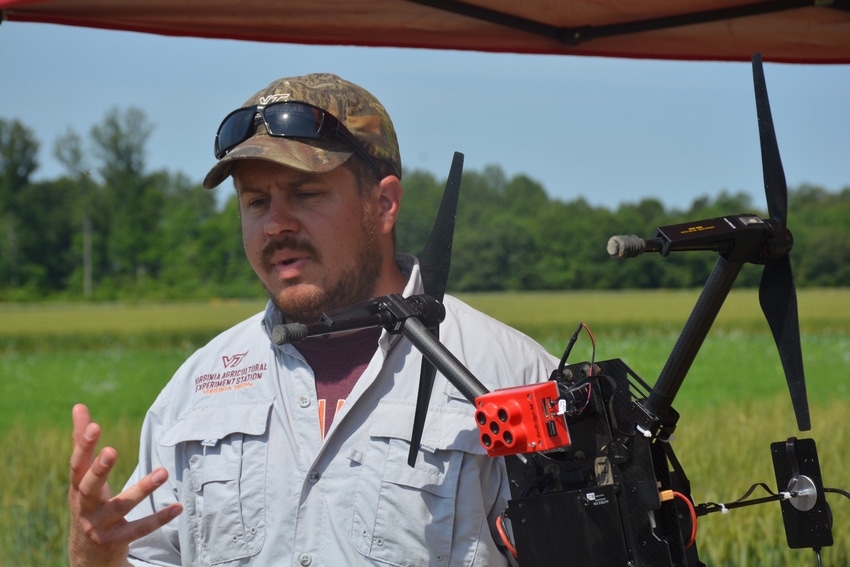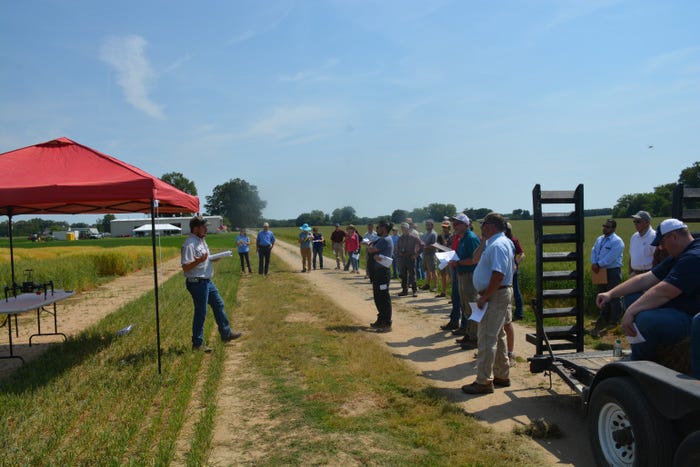
For some time now, Virginia Tech has emphasized using tiller density to determine if nitrogen applications are needed at Growth Stage 25 in wheat.
Research published in Extension publications over several years advises that with a threshold of 50 to 100 tillers you don’t need to apply nitrogen at Growth Stage 25, but if your tiller count falls below 50 at that stage, nitrogen is needed. In the past, handheld Normalized Differential Vegetative Index sensors have been used to collect the data on the greenness of plants and to determine how growth is progressing and the relationship to tiller count.
But with the advent of drones, Virginia Tech wanted to find out if aerial imagery could be used to help determine nitrogen rate and timing. In 2017, Joseph Oakes, superintendent of the Eastern Virginia Agricultural Research and Extension Center in Warsaw, and his team, launched a study examining the relationship between tiller density and aerial NDVI collected with an unmanned aerial vehicle over several Virginia locations.
In the research, Oakes and his crew used a drone with a five-band multi-spectral sensor. “A normal digital camera has just a red, green and blue bands. This one has a near infrared and red edge band as well which enables us to collect values like NDVI and NDRE [Normalized Difference Red Edge] data,” Oakes said at the Virginia Small Grain Field Day at the Eastern Virginia AREC May 20.
Oakes says the research reveals that NDVI data collected through drones recommends the same amount of Growth Stage 25 nitrogen as did tiller density. Both methods recommended applying 40 pounds of nitrogen at Growth Stage 25 if the tiller count was below 50.
Importantly, Oakes said the research shows there is no yield difference if Growth Stage 25 nitrogen is applied based on tiller density or NDVI.
“Aerial NDVI is a great proxy and it can be used to determine tiller density, so instead of having to go out and physically count tillers, you can fly your drone to collect your NDVI data. That is going to be a fairly good proxy for determining tiller density,” Oakes said.
The next step in the research is to bring the studies to large scale farmer fields in Virginia. Oakes said Virginia Tech has been notified that this next stage of research has been funded by the Virginia Agricultural Council beginning in 2022. This will allow researchers to determine if the technology works large scale on the farm instead of just in small plots.
Oakes urges farmers who want to participate in the research on their farm to contact him at [email protected].

Joseph Oakes explains research examining aerial imagery to determine nitrogen timing during the Virginia Small Grains Field Day at the Eastern Virginia Agricultural Research and Extension Center in Warsaw May 20. Last year’s field day was a virtual event due to the coronavirus. (John Hart Photo)
About the Author(s)
You May Also Like






